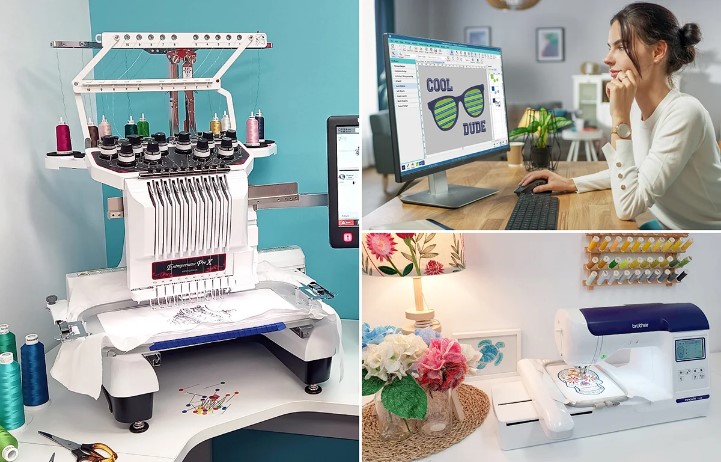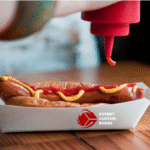If you’re running an embroidery project or preparing custom branding, Logo To PES Conversion is one of the most important steps in making your design stitch-ready. A PES file is the standard embroidery format for Brother and Babylock machines, and without it, your embroidery equipment simply won’t recognize the design. Whether you’re digitizing a simple company logo or a complex piece of artwork, converting it into PES format ensures clean stitches, accurate colors, and perfect alignment every time.
In this guide, we’ll explore the importance of PES conversion, how the process works, and why expert digitizing can save you time, money, and frustration.
What is PES File Format?
The PES file format is widely used in the embroidery world, especially for Brother and Babylock embroidery machines. Unlike image files (like JPG or PNG), PES files contain machine-readable instructions about:
- Stitch types (satin, fill, run, etc.)
- Stitch order and sequence
- Colors and thread information
- Start and stop points
This information allows embroidery machines to replicate your logo with incredible precision.
Why Convert Your Logo to PES?
Simply uploading a logo image to your embroidery machine won’t work; it needs to be translated into a format the machine understands. Converting your logo to PES offers several advantages:
- Machine Compatibility – Ensures your design runs smoothly on Brother and Babylock machines.
- High Precision – PES files retain sharp details, making even small logos look professional.
- Scalable Results – Properly digitized files can be resized without compromising stitch quality.
- Consistency – Your logo will look the same across uniforms, caps, bags, and promotional items.
The Process of Logo to PES Conversion
Turning a logo into a PES file isn’t a simple “save as” option; it requires expertise. Here’s how professionals handle the process:
- Artwork Preparation – Reviewing the logo for clarity, simplifying details if needed.
- Digitizing – Using professional digitizing software to map out stitches, density, and underlay.
- Stitch Sequencing – Arranging the order of stitches to minimize trims and jumps.
- Thread Color Matching – Assigning threads that match your brand’s exact colors.
- Test Run – Running a sample stitch to check alignment, density, and coverage.
- Final File Export – Delivering a PES file optimized for your embroidery machine.
Benefits of Professional PES Conversion
While there are free converters and auto-digitizing tools available, they rarely produce reliable stitch files. Professional PES conversion provides:
- Crisp Edges & Details – Especially important for small lettering or intricate logos.
- Fabric-Specific Adjustments – Settings tailored for cotton, polyester, denim, or caps.
- Time Savings – Avoid wasting hours troubleshooting poor-quality files.
- Thread Efficiency – Optimized stitch sequences reduce thread waste and machine strain.
- Error-Free Results – Fewer skipped stitches, distortions, or thread breaks.
Common Mistakes to Avoid in Logo to PES Conversion
Not every file that “works” is actually good. Here are a few pitfalls of low-quality conversions:
- Jagged Edges – Poor stitch mapping results in uneven outlines.
- Overlapping Stitches – Wastes thread and creates bulky, messy embroidery.
- Incorrect Density – Too dense causes thread breaks, too loose makes gaps visible.
- Wrong Colors – Thread shades don’t match brand colors, leading to inconsistencies.
This is why relying on expert digitizers is always the better choice.
Applications of PES Logo Conversion
Once your logo is converted to PES, it can be used for a wide variety of embroidery projects:
- Corporate Uniforms – Create a consistent brand image.
- Promotional Items – Hats, tote bags, and jackets with your stitched logo.
- Sports Apparel – Team logos stitched onto jerseys and caps.
- Personal Projects – Monogrammed gifts or customized embroidery.
Choosing the Right Digitizing Partner
When looking for PES conversion services, keep these qualities in mind:
- Experience – Skilled digitizers who understand embroidery machines and fabrics.
- File Flexibility – Ability to deliver files in multiple formats if needed.
- Fast Turnaround – Quick delivery for urgent orders.
- Customer Support – Willingness to make edits and adjustments if required.
- Fair Pricing – Competitive rates without compromising on quality.
How Much Does PES Conversion Cost?
The cost of converting a logo to PES depends on the design’s complexity and stitch count. Simple logos with clean shapes may cost less, while intricate logos with multiple colors and details may cost more. That said, investing in professional PES conversion saves money in the long run by avoiding wasted fabric, thread, and machine downtime.
Final Thoughts – Stitch-Perfect Logos Every Time
Converting your logo to PES format is a crucial step in ensuring high-quality embroidery results. With the right digitizing approach, your logos will stitch cleanly, maintain brand accuracy, and look professional across any application.
For businesses, teams, or individuals who want expert-quality PES files without the hassle, Digitizing Buddy offers reliable and affordable logo conversion services, ensuring every stitch reflects your brand with precision.


